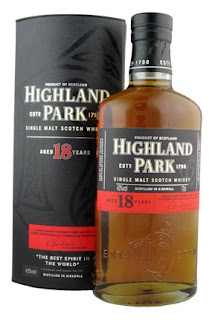
Talisker 10 years old
A review by Tommy Byrne
Overall rating: 9/10 (Single Malt notation)
My first encounter with Talisker, circa 2004, was not a memorable one. Presented to me as the best single malt according to many of my friends, I remember finding it drinkable, but way too salty and not really pleasant overall. At that time, I was getting acquainted with Speyside malts and tend to prefer lighter whiskies with a smoother character than Talisker. It finally took me 7 years to try another dram of this so called Classic Malt. Verdict: not too shabby!
I was quite impressed pouring my first dram; I didn’t expect such an amber coat for some 10 years aged malt. The nose is quite intense, peat is clearly present, but I generally found larger notes of camphor and frankincense. It also reveals some sherry cask notes. My first impressions in the palate were notes from the mash; the malted barley is more palpable than in Islay malts. This whisky has certain “toastiness”, “coaliness” and leathery feeling to it, but no elements overshadows another. Contrary to my apprehension, I didn’t find it too iodized. It’s a pretty balanced whisky with a strong and persistent finish.
Overall I was quite pleased with this 10 years expression of Talisker. For the reasons evoked above, I had such a huge preconception about this whisky; they proved to be wrong. This lonely single malt from the Island of Skye is definitely complex and enjoyable. Even if I found it too sharp at some point, it’s a good substitute to break my Islay malt routine.








